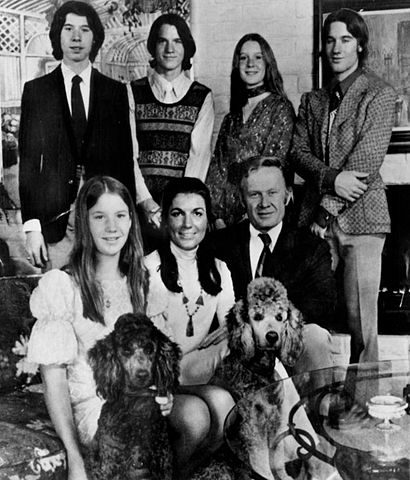Gender plays a significant role in shaping the American family and has evolved over time in response to changing societal norms, roles, and expectations. Here’s an exploration of how gender influences the structure and dynamics of American families:
1. Gender Roles and Expectations:
- Traditionally, American families adhered to distinct gender roles, where men were expected to be the primary breadwinners and women were responsible for household and caregiving duties. These traditional roles influenced family structures and dynamics.

2. Evolving Gender Roles:
- Over the past several decades, gender roles within American families have evolved. Women have increasingly entered the workforce, and men have taken on more responsibilities in the home. This shift has led to greater flexibility in family roles and responsibilities.
3. Dual-Income Families:
- A significant change in American families is the prevalence of dual-income households. Both partners, regardless of gender, often contribute to the family’s financial stability.
4. Role Reversal:
- In some families, there has been a role reversal, with women as primary breadwinners while men take on more caregiving and homemaking responsibilities. This reflects the changing landscape of gender and family dynamics.
5. Blended Families:
- Gender plays a role in the formation of blended families, where individuals from previous relationships come together. These families often involve stepmothers and stepfathers, and understanding diverse gender dynamics is crucial.
6. LGBTQ+ Families:
- The LGBTQ+ community has contributed to expanding notions of gender and family. Same-sex couples and transgender individuals have formed families, challenging traditional gender roles.
7. Influence on Parenting Styles:
- Gender can influence parenting styles, with mothers and fathers often bringing unique qualities and approaches to child-rearing. This can shape children’s perceptions of gender roles and behavior.
8. Gender and Division of Labor:
- The division of labor within the household, such as who does the cooking, cleaning, and childcare, can be influenced by gender norms and expectations. However, many families now strive for a more equitable distribution of tasks.
9. Impact on Educational and Career Choices:
- Gender can influence educational and career choices within the family. Parents’ expectations and encouragement can shape their children’s aspirations and opportunities.
10. Influence on Family Decision-Making:
- Gender may affect family decision-making processes. Some decisions may be influenced by traditional gender roles or by the desire to break away from these roles.
11. Representation and Media Influence:
- Media portrayal of gender roles, family life, and relationships can influence how individuals perceive their own roles within the family.
12. Impact on Family Dynamics:
- Gender can impact family dynamics in terms of power, decision-making, and communication patterns. These dynamics can contribute to family harmony or conflicts.
In summary, the role of gender in shaping the American family is complex and continually evolving. Changes in societal norms, work patterns, and legal recognition of diverse family structures have challenged traditional gender roles and expectations. As American society continues to progress, families will likely continue to adapt to shifting gender dynamics, leading to more diverse and inclusive family structures and roles.











